3 Quick Methods To Know if Your TV Supports Dolby Atmos
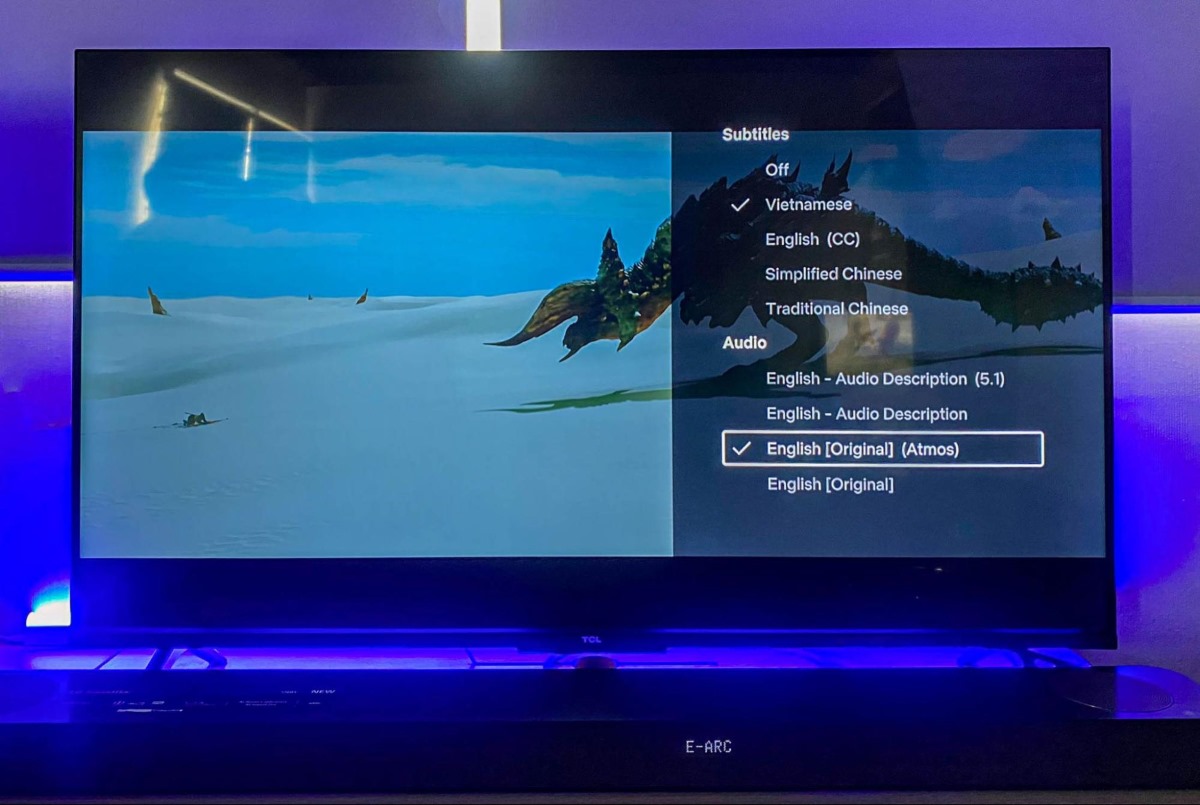
- Method 1: Inspect for an ARC or eARC HDMI port on your TV, which indicates Dolby Atmos support.
- Method 2: Search online for your TV model’s specifications to confirm the presence of HDMI ARC, signaling compatibility with Dolby Atmos.
- Method 3: Explore your TV’s sound settings for a Dolby Atmos option, as found in the audio or expert settings menu of some brands like Samsung and LG.
In this article, I will present three quick methods to determine whether your TV supports Dolby Atmos.
Let’s dive in!
Quick Navigation
How Can I Tell if My TV Supports Dolby Atmos?
Wondering how you can determine if your TV supports Dolby Atmos?
There are a few straightforward methods to figure this out.
1. Check if Your TV Has an ARC or eARC HDMI Port
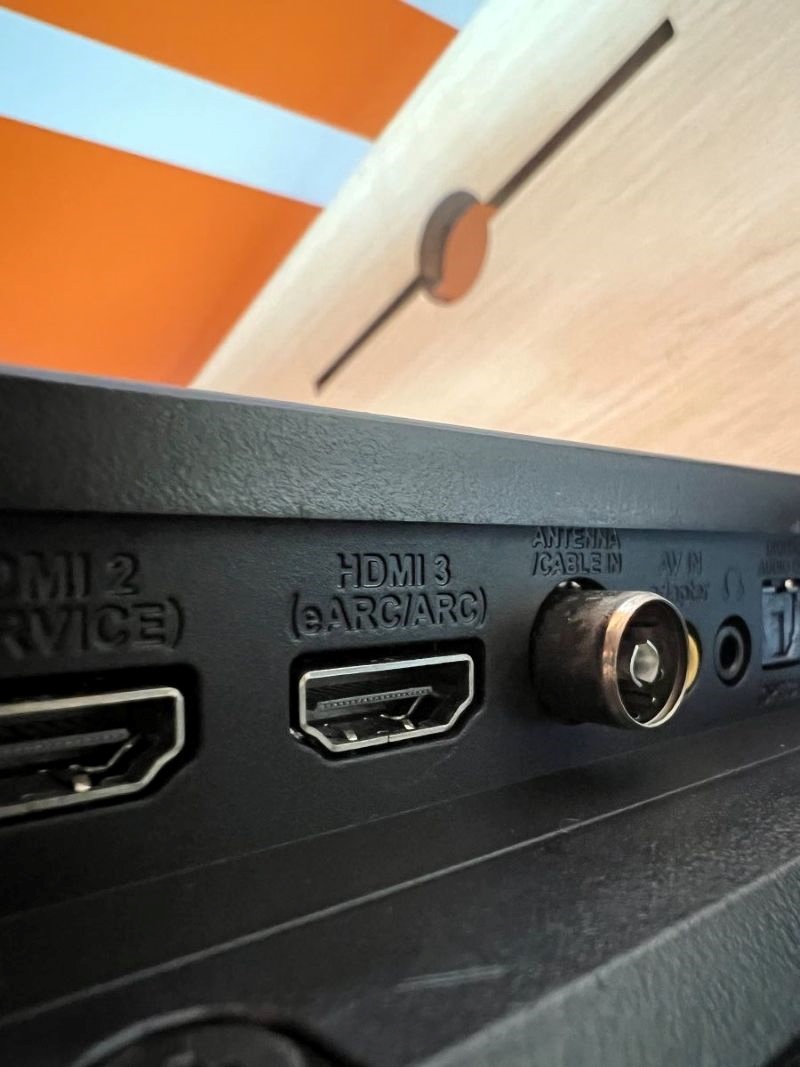
First and foremost, inspect the back of your TV for an ARC or eARC HDMI port.
If your TV has an ARC or eARC HDMI port, it likely supports Dolby Atmos.
This means you can connect your TV to a Dolby Atmos-compatible soundbar to experience immersive sound in the Dolby Atmos format.
2. Look Up Your TV’s Specifications Online
Another reliable method is to look up your TV’s specifications online.
To do this, simply type your TV’s model name into a web browser, adding the word “spec” at the end.
For example, if I were to look up my Sony TV, I’d type “Sony 43XKD75 spec.”
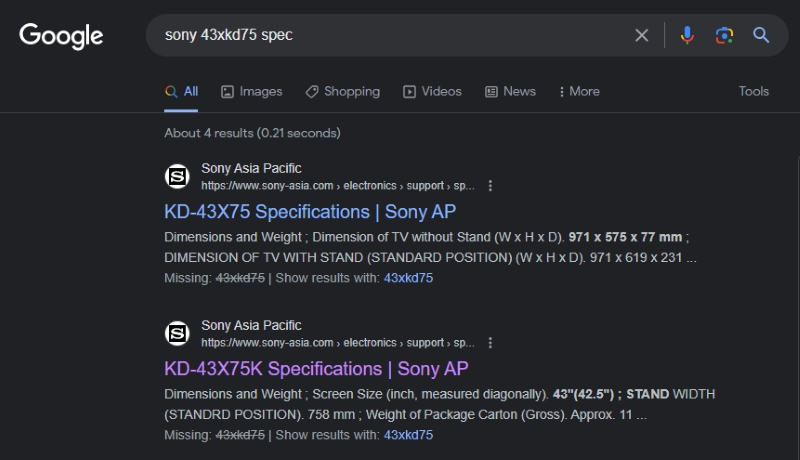
Then, navigate to the manufacturer’s website and explore the Connectivity section.
If you spot HDMI AUDIO RETURN CHANNEL (ARC) marked as “yes” or something similar, that’s a good indication that your TV supports Dolby Atmos.
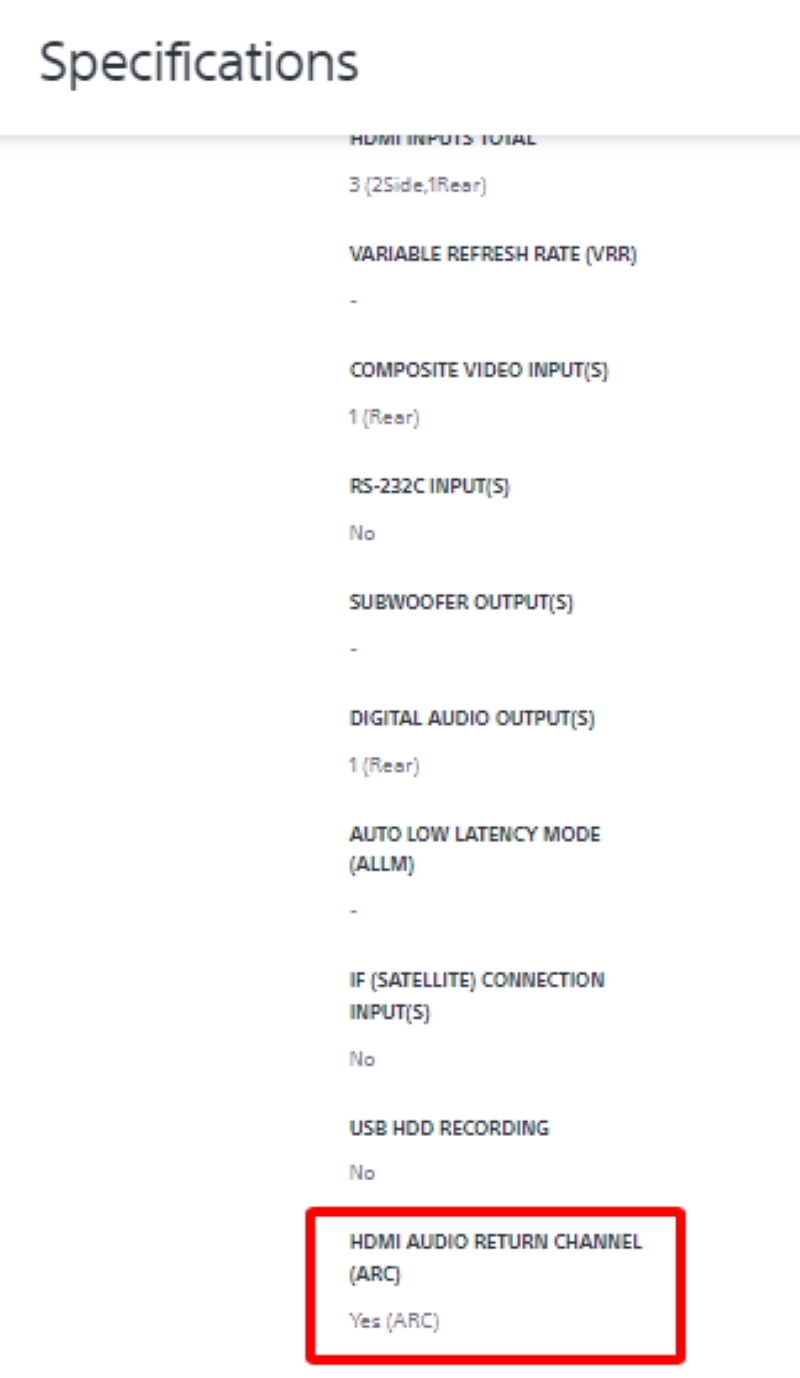
Some models, like the TCL C635, even clearly indicate their support for Dolby Atmos directly on the manufacturer’s website.
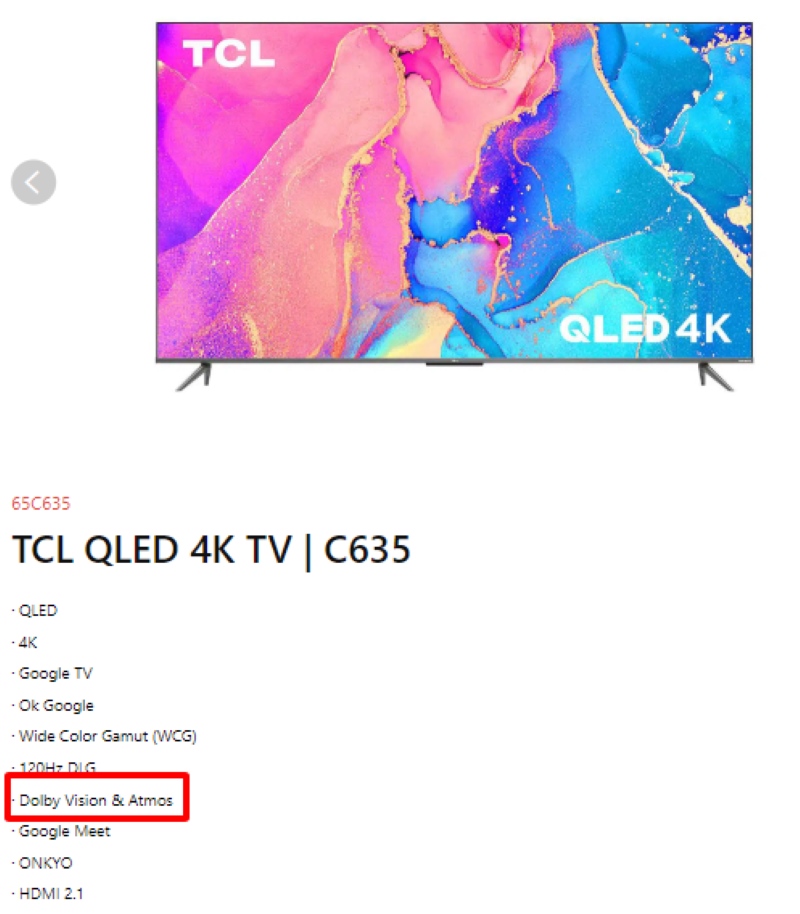
3. Check Your TV’s Sound Settings (if Available)
Lastly, you can delve into your TV’s sound settings.
Certain TV models, especially some from Samsung, have included a Dolby Atmos feature in their sound settings, as demonstrated on my Samsung TV below.
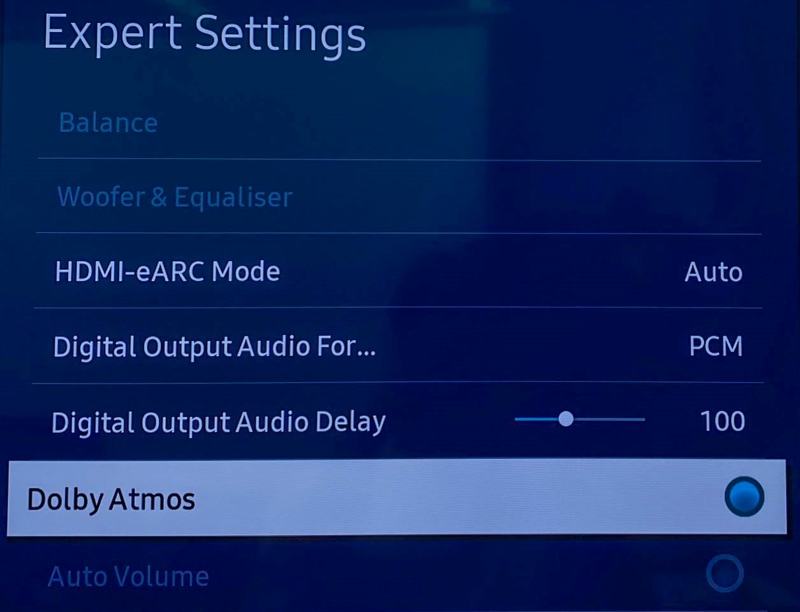
For your convenience, please refer to the summary table below to find Dolby Atmos settings for popular TV brands.
| Brands | Settings Sequence |
| Samsung | Home menu > Settings > Sound > Expert Settings > Dolby Atmos |
| LG | All settings > Sound > Advanced Settings > Dolby Atmos |
| TCL | Settings > Display and Sounds > Audio > Audio Processing > Dolby Atmos |
| Sony | Settings > Display & Sound > Audio output > ARC/eARC mode |
What Is Dolby Atmos?
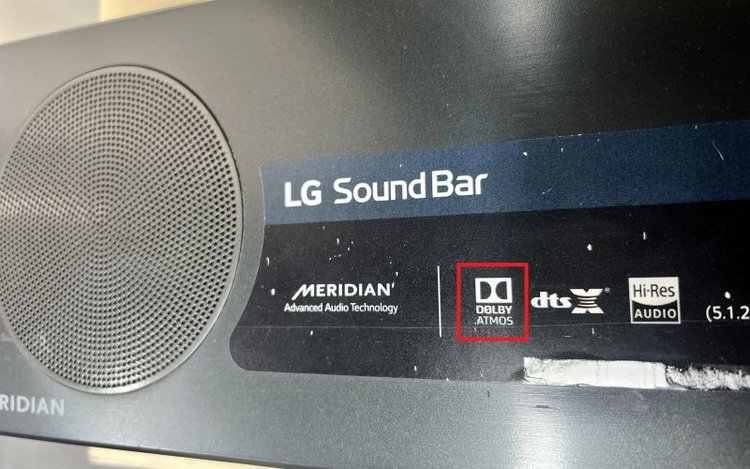
Dolby Atmos is a set of metadata that compatible audio equipment uses to determine which set of speakers must reproduce certain sounds.
For example, suppose an airplane is flying overhead. In that case, Atmos data ensures the aircraft’s sound is reproduced through a speaker positioned above the listener’s head and not any other speaker in the setup.
The airplane gets treated as a discrete object, helping the Atmos receiver segregate the aircraft sound from other sounds and transport it between speakers based on the vehicle’s positioning in a given scene.
Kindly note that Dolby Atmos is audio information and not the sound itself. The Atmos data relies on or builds on existing surround sound signals. Also, Atmos requires all ingredients in the setup to support Atmos—including the content and the hardware (speakers, receiver, etc.).
Atmos is one of the multiple ways Dolby metadata can enrich already existing sounds. Dolby Digital Plus and Dolby TrueHD are other audio formats available.
Invariably, Dolby Atmos piggybacks on Dolby Digital Plus to provide a wholesome audio experience—and, at times, Dolby TrueHD.
How To Set Up Dolby Atmos Output on Your TV?
Once you’ve confirmed that your TV supports Dolby Atmos, as discussed in the prior section, setting up the Dolby Atmos output is relatively simple:
Step 1: Begin by connecting your TV to a Dolby Atmos-compatible soundbar. It’s crucial to use the HDMI ARC/eARC ports on both devices for this connection.
For the best audio experience, I’d strongly suggest opting for a 2.1 HDMI cable.
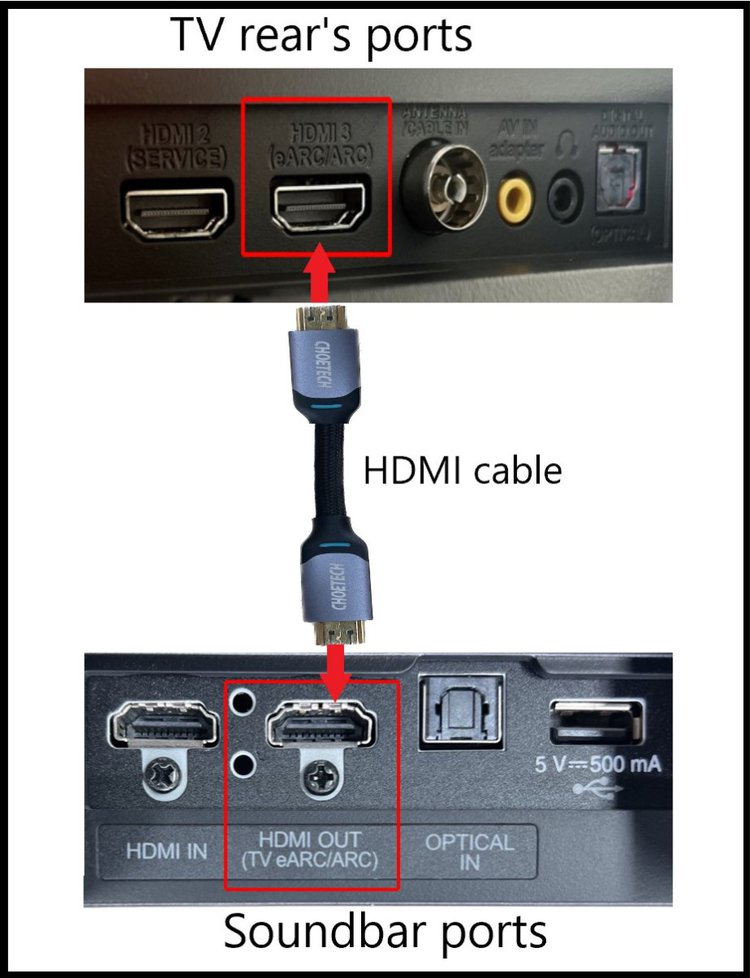
Step 2: If not already active, ensure you enable the Dolby Atmos settings within your TV’s menu.

Step 3: In some cases, you might also need to adjust your soundbar’s input settings to ARC/eARC to match the connection.

Step 4: Once everything is properly configured, dive into some Dolby Atmos formatted content, like a captivating Netflix movie, and savor the rich, immersive Dolby Atmos audio experience.

A clear indicator that everything is working seamlessly is the “Dolby Atmos” label on your soundbar.
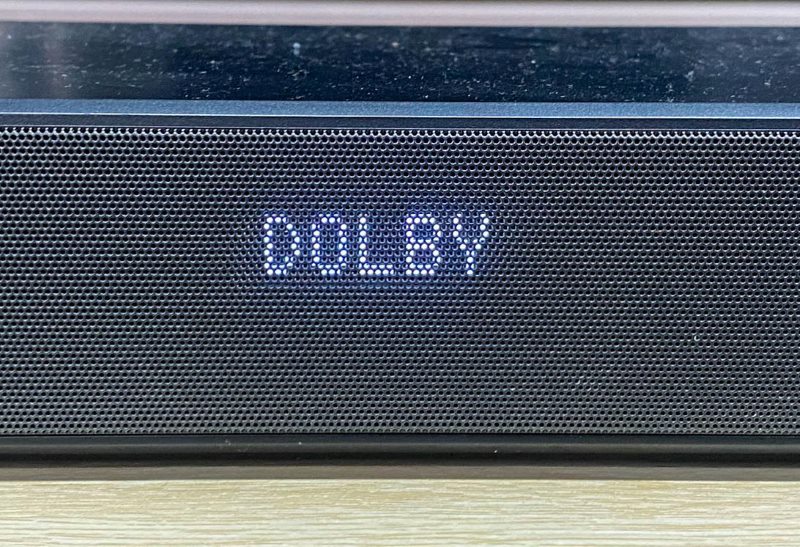
Moreover, while enjoying your content, you may notice an “Atmos” label present within the audio settings of your TV’s Netflix media player.
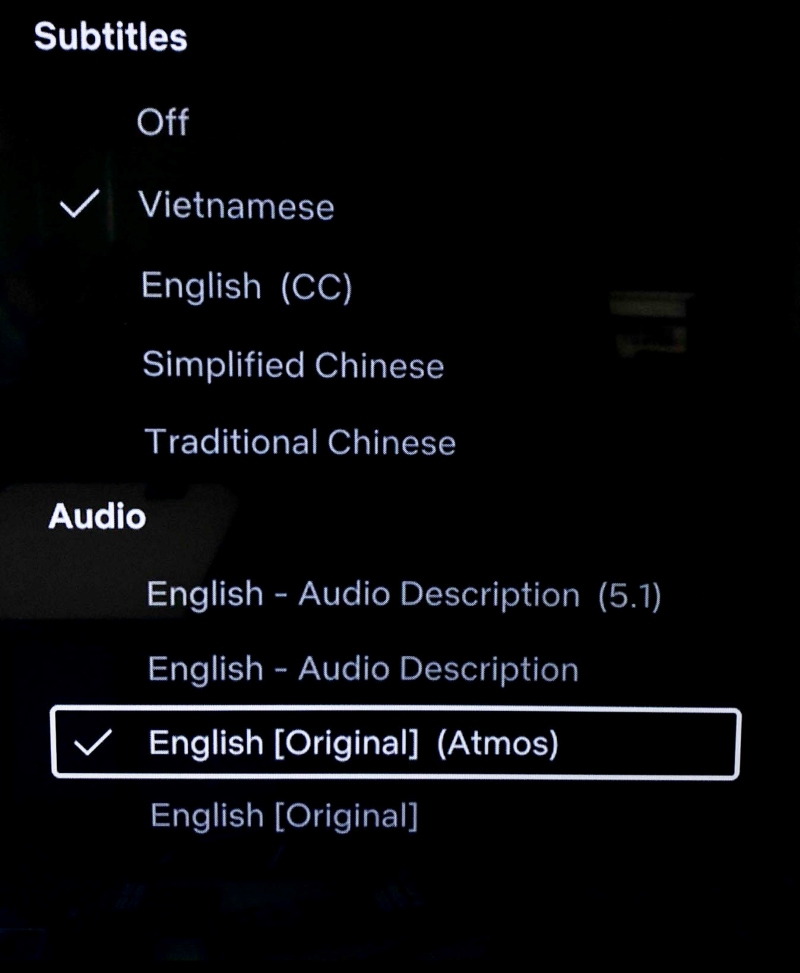
Should you face any challenges, like the “Dolby Atmos greyed out” issue on your TV, we have a dedicated article that delves deeper, offering guidance and solutions.
FAQ: Do I Need a Dolby Atmos TV To Get Dolby Atmos Sound?
The answer is yes, your TV must be equipped with an ARC or eARC HDMI port to support the Dolby Atmos format through an external audio system, such as a soundbar.
This is because standard connections often can’t support the data transfer needed for Dolby Atmos, requiring specific ARC or eARC ports instead.
Conclusion
Dolby Atmos produces clearer, richer audio that is discernible even if your ears are tuned to 5.1 or 7.1 surround sound.
It’s, therefore, worth the effort and time to set up Atmos audio and confirm if the different equipment, like your TV, supports Atmos natively.
But Dolby Atmos doesn’t work in a vacuum. It needs several elements to work symbiotically. So, just a TV with Atmos-friendly content won’t cut it.
You need the right kind and number of speakers, an Atmos-capable receiver, etc.
Therefore, don’t blame your TV if Atmos is not working. Ensure you’ve covered all the bases first.
Meet Vance. He’s a proud dad, a seasoned Electronics Engineer, and an avid tech lover. His proficiency in electronics and troubleshooting skills were instrumental in crafting Pointer Clicker. Vance is passionate about simplifying tech for those who aren’t well-versed in it.


